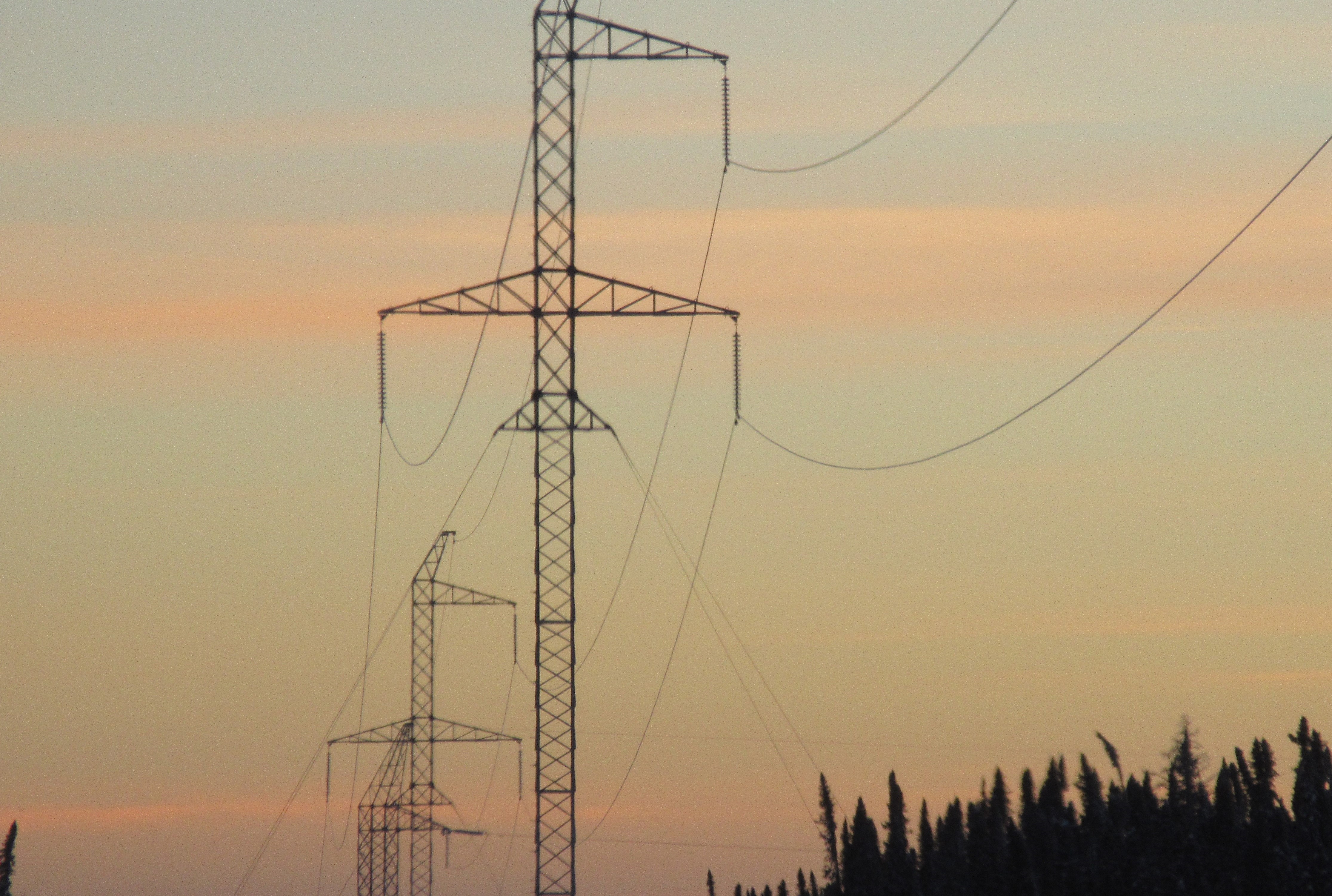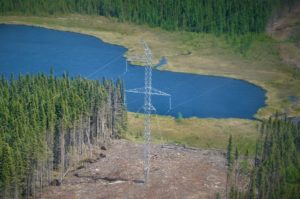Wataynikaneyap Transmission Line

Projects Sponsor
The Wataynikaneyap Power Project is an unprecedented First Nations-led project building approximately 1,800 kilometres of transmission lines in North-western Ontario to connect remote First Nations communities to the Ontario power grid. The project will reinforce the existing transmission grid to Pickle Lake and will expand grid service to ultimately connect 17 First Nations. These communities are currently provided with electricity through diesel generation.

Wataynikaneyap Power Completed Tower
Currently twenty-one of the twenty-five remote communities in north-western Ontario are not connected to the provincial power grid.
That means these remote communities are reliant on diesel, which is costly, energy inefficient to transport, and generates extremely adverse environmental impact due to emissions. Connection to the power grid will end electrical load restrictions by providing adequate electricity for all – while also allowing the development of sufficient and efficient housing and community facilities.
For fourteen years, Wataynikaneyap Power have been working on improving regional energy access for the First Nations of north-western Ontario. In 2008, the original Central Corridor Energy Group was given the mandate to pursue the planning and development of an electrical transmission line to connect communities to the provincial electricity grid, owned by the communities.
In March 2012, the communities signed a partnership agreement which has since evolved into the First Nation Limited Partnership. Wataynikaneyap Power received its Transmission Licence from the Ontario Energy Board in 2015 and was designated by the province as a “Priority Project.”
The funding framework was announced in March 2018, and in that same year, Project financing was secured. The Construction (EPC) contractor was given notice to proceed and Environmental Assessment approvals were received for Phase 1 and 2 of the Project. Construction of the line is now over 50% completed, is on schedule to be in full operation by 2024.
In the interm, wo communities will be connected in 2022—twenty-five years following the operation date for the Wataynikaneyap Transmission Line, the First Nation Limited partnership has the ability to purchase 100% of the Project and infrastructure.
The team behind this great success Margaret Kenequanash, Wataynikaneyap Power, CEO and the team (First Nation partners, FortisOntario, Fortis Inc.) By understanding the mandates and the needs of the communities. Kenequanash played a major role in educating government officials on energy needs and advocated for the importance of these communities having access to clean, reliable energy, and attracting industry partners. She was also a key player in generating first national engagement – ensuring the community members were educated on energy and the mandates and government regulations that came with the project.

Margaret Kenequanash with the Wataynikaneyap Power Tower
In the years leading up to construction, many exercises to ensure success of the projects were carried out including socio-economic studies, pre-development, financial modelling, and feasibility studies. Prior to construction, a careful review of government policies and how they impact the project was also conducted. All these studies were completed as a collaborative team effort, with partner organisations investing time when necessary. Kenequanash played a major role in getting these studies off the ground and worked.
In 2013, the estimated cost for diesel generation for sixteen of Wataynikaneyap’s remote communities was $43 million and was projected to grow. At that time, the PwC estimated a present net value of $1.15 billion in savings by having the transmission line built and connecting the remote locations.
The Wataynikaneyap Power Project is a prime example of successful partnership between First Nations and Industry, one that has provided vital and growing communities with a connection to the power grid, which will have multi-generational benefits for First Nations.
This was the work of 24 First Nations with equal partnership (51% ownership) which, importantly, means that the infrastructure is owned by the communities it serves. It’s an inspiring story of hard work and tenacity that got the grid unlocked.













